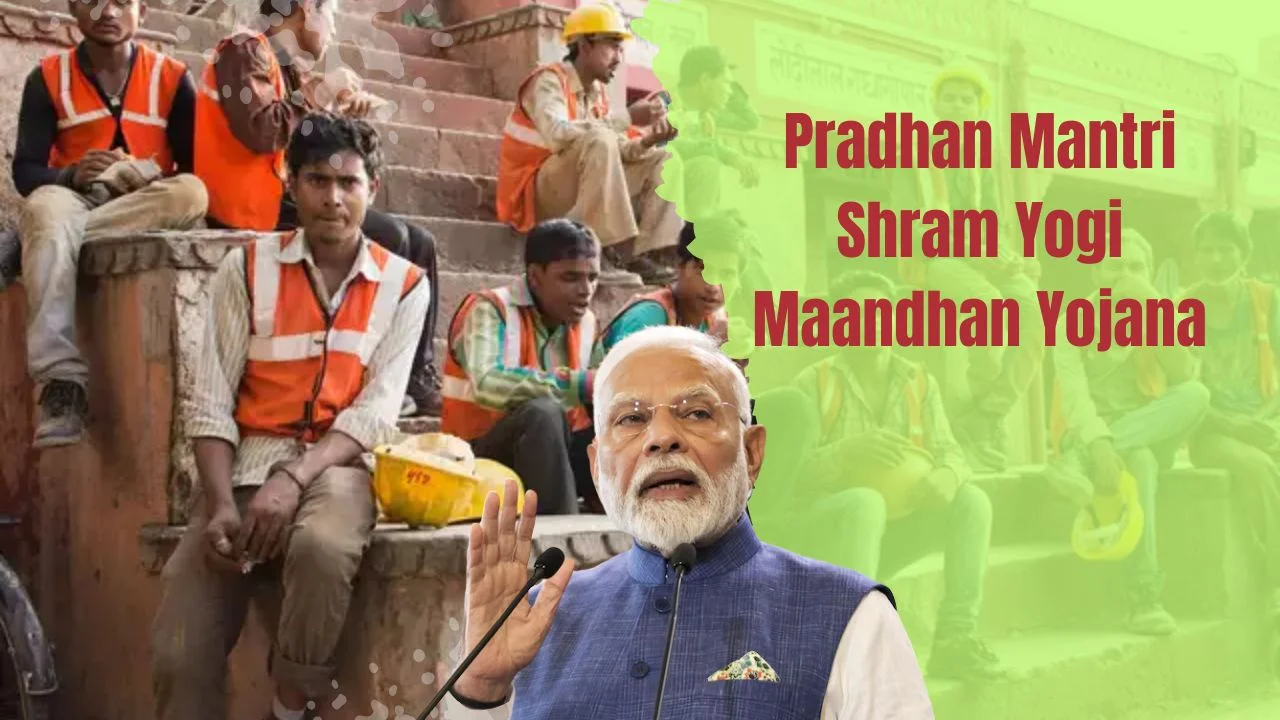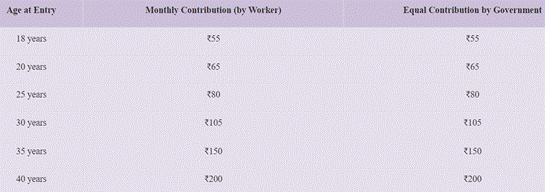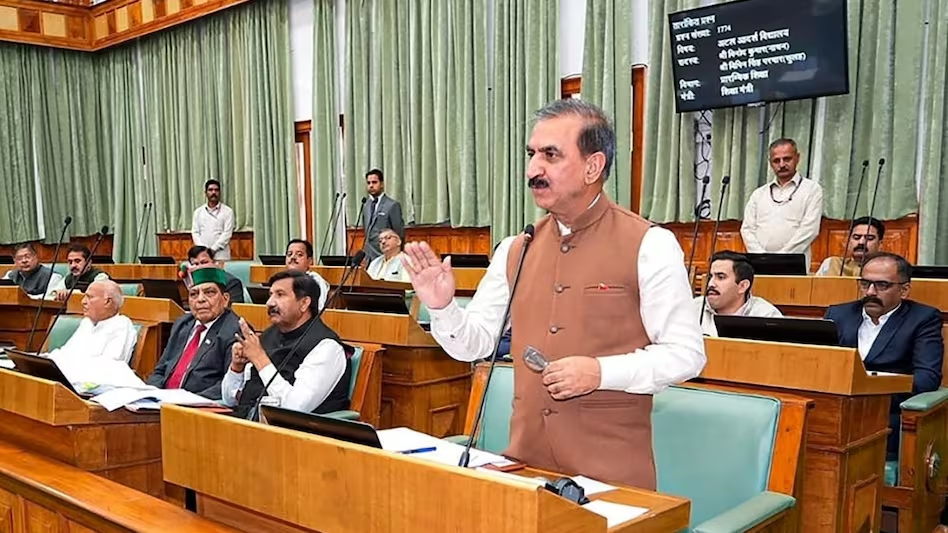- Courses
- GS Full Course 1 Year
- GS Full Course 2 Year
- GS Full Course 3 Year
- GS Full Course Till Selection
- Answer Alpha: Mains 2025 Mentorship
- MEP (Mains Enrichment Programme) Data, Facts
- Essay Target – 150+ Marks
- Online Program
- GS Recorded Course
- Polity
- Geography
- Economy
- Ancient, Medieval and Art & Culture AMAC
- Modern India, Post Independence & World History
- Environment
- Governance
- Science & Technology
- International Relations and Internal Security
- Disaster Management
- Ethics
- NCERT Current Affairs
- Indian Society and Social Issue
- NCERT- Science and Technology
- NCERT - Geography
- NCERT - Ancient History
- NCERT- World History
- NCERT Modern History
- CSAT
- 5 LAYERED ARJUNA Mentorship
- Public Administration Optional
- ABOUT US
- OUR TOPPERS
- TEST SERIES
- FREE STUDY MATERIAL
- VIDEOS
- CONTACT US
6 Years Of Pradhan Mantri Shram Yogi Maandhan Yojana
6 Years Of Pradhan Mantri Shram Yogi Maandhan Yojana
06-03-2025

- Recently, Indian Government celebrated 6 years of Pradhan Mantri Shram Yogi Maandhan (PM-SYM)
- It is a pension scheme for workers in the unorganised sector.
- Also in December 2024, A Parliamentary Standing Committee (PSC) report raised concerns over the underperformance of the Pradhan Mantri Shram Yogi Maandhan Yojana (PM-SYM).
|
Parliamentary Committees (PC)
|
What is the Pradhan Mantri Shram Yogi Maandhan Yojana (PM-SYM)?
- About: PM-SYM is a Central Sector Pension Scheme launched in 2019 by the Government of India, administered by the Ministry of Labour and Employment.
- Under this scheme, Life Insurance Corporation of India (LIC) act as the Pension Fund Manager.
- Target Beneficiaries: The scheme aims at workers in the unorganised sector aged between 18 and 40, such as street vendors, domestic workers, construction labourers, agricultural workers, etc., with a monthly income of up to ₹15,000.
- Pension Benefits: PM-SYM guarantees a pension of ₹3,000 per month after the worker turns 60.
- However, if the worker passes away before 60, there is no lump sum payment to their family.
- The spouse of the deceased worker will receive 50% of the pension amount as a family pension.
Implementation and Current Status:
- Coverage: 36 States/UTs
- Enrollments: 46,12,330 (March 2025)
- Top 3 States: Haryana, Uttar Pradesh, Maharashtra
Contribution Structure

The contribution amount varies based on the age at the time of enrolment. The earlier a worker enrolls, the lower the monthly contribution.
What are the Highlights of the PSC Report on PM-SYM?
- Poor Performance of PM-SYM:
- The PM-SYM scheme has performed poorly, mainly due to low enrolment and reduced government funding.
- Government contributions have halved over the past two years.
- In FY 2023-24, the expenditure was ₹162.51 crore, down from ₹324.23 crore in FY 2021-22.
- But, In the Union Budget 2025-26, the allocation for PM-SYM has been increased to ₹244.2 crore
- The PM-SYM scheme had a target of enrolling 100 million workers by 2023 but achieved only 5 million enrollments by FY 2024, covering less than 1% of the 565 million strong unorganised workforce.
- Despite this, the government has extended the scheme until 2025-26.
- Reasons for Poor Performance:
- Income Challenges: Unorganised workers, especially daily wage earners, often have irregular incomes and unstable employment, making it difficult to afford the monthly premium ranging from ₹55 to ₹200.
- Impact of Covid-19: The COVID-19 pandemic further exacerbated the financial challenges of unorganised workers, limiting their ability to contribute to the scheme.
- Structural Barriers: The lack of a formal employer-employee relationship in the unorganised sector leads to difficulties in accessing the scheme due to insufficient documentation and a lack of awareness.
- Existing Pension Alternatives: The availability of other pension schemes like Atal Pension Yojana (APY) may confuse workers, leaving them uncertain about which scheme to opt for.
- Recommendations for Revamping the Scheme:
- Expand Entry Age: Increase the eligibility age from 40 years to 50 years to include older unorganised workers.
- Scheme Merger: Merge PM-SYM with the Atal Pension Yojana (APY) and Pradhan Mantri Laghu Vyapari Maandhan Yojana to ensure better alignment and broader coverage.
- e-Shram Portal: Utilize the e-Shram portal, which has a database of over 305 million workers, to streamline enrolment and ensure wider reach. Integration of PM-SYM with the e-Shram portal could make the enrolment process easier.
- Direct Benefit Transfer (DBT): Introduce subsidies for workers who cannot afford to pay the monthly premium, ensuring that they can still benefit from the scheme.
- Awareness Campaigns: Launch targeted outreach programs to improve awareness about the scheme and reduce misinformation, which could increase participation.
Who are Unorganised Workers?
- As per the Unorganised Workers' Social Security Act, 2008, unorganised workers include home-based workers, self-employed workers, or wage workers who are not covered by key labour laws (e.g., Employees' Compensation Act, Industrial Disputes Act, etc.).
- Examples: Unorganised workers include street vendors, agricultural labourers, domestic workers, construction workers, and other informal sector employees.
Initiatives for Unorganised Workers:
Several initiatives aim to improve the welfare of unorganised workers:
- e-Shram Portal: A comprehensive database of unorganised workers.
- Pradhan Mantri Jeevan Jyoti Bima Yojana (PMJJBY): Life insurance for the unorganised workforce.
- Pradhan Mantri Kaushal Vikas Yojana: Skill development for workers in the unorganised sector.
- Ayushman Bharat-Pradhan Mantri Jan Arogya Yojana (AB-PMJAY): Health insurance for the unorganised sector.
- National Pension System (NPS): Voluntary, for government/private employees with tax benefits.
- Atal Pension Yojana (APY): For unorganised sector workers, offering a guaranteed pension between Rs 1,000–5,000/month.
- Pradhan Mantri Shram Yogi Maandhan (PM-SYM): Provides Rs 3,000/month for street vendors, domestic workers, etc.
- PM-Kisan Maandhan Yojana (PM-KMY): Rs 3,000/month pension for farmers.
Global Pension Context:
- India's Pension Ranking: Ranked last among 48 countries in the 2024
- Mercer CFA Institute Global Pension Index with a score of 44/100.
- Countries like Denmark, Netherlands, and Iceland top rankings with state-funded systems ensuring universal coverage.
- India’s system is mostly contribution-based, with low pension coverage, inadequate retirement income, and lack of regulatory oversight.
Projected Demographics:
- Ageing Population: By 2036, 227 million Indians (15% of population) will be 60+ years, increasing to 347 million (20%) by 2050.
- This necessitates a more inclusive pension model
.
International Models:
- Netherlands: 3-tier system (universal state pension, occupational pension, voluntary savings).
- Denmark: State-funded universal pension combined with mandatory occupational pensions.
- New Zealand: Flat-rate universal pension for all residents over 65, regardless of employment history.
- Sweden: Multi-pillar system (guaranteed minimum pension, income-related pension, optional premium pension).
|
Also Read |
|
| FREE NIOS Books | |




